The snake plant is among the most prevalent houseplants available, if not the most (Sansevieria). The simplicity of growth is a common reason why they are chosen, despite the fact that their structural shape, also known as mother-in-law’s tongue, is highly coveted. In this article, I’ll share with you common Snake Plant problems.
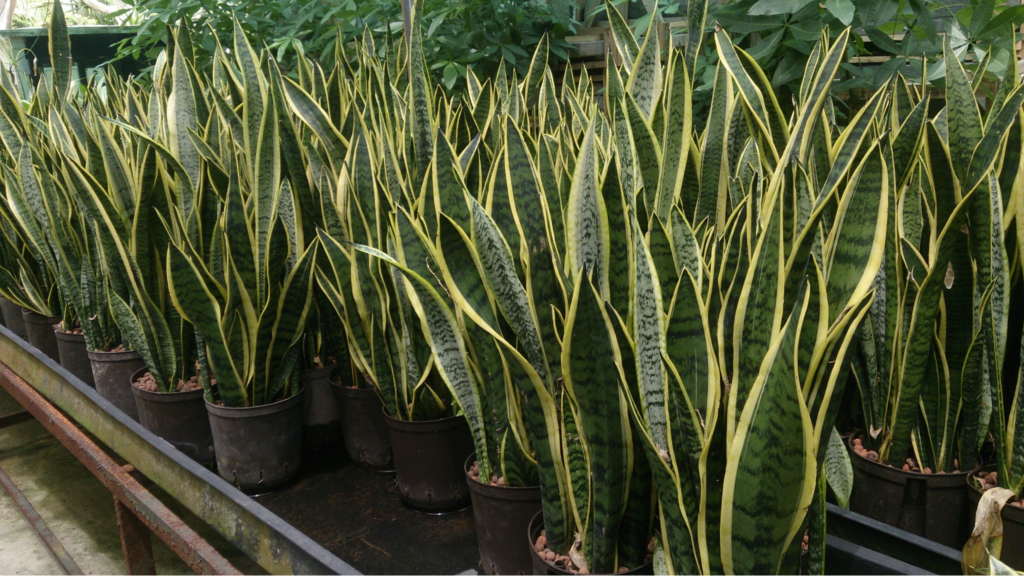
If you regularly destroy houseplants, this plant is for you.
Given how carefree their snake plant is, many plant enthusiasts are shocked to discover that it can have problems. However, they are mostly known for withstanding various lighting situations and misuse. Hence you could have a hard time envisioning anything going wrong ever.
Common snake plant problems include leaves drooping, brown patches, poor snake plant’s soil, or a lack or stunted growth. However, the majority of issues can be swiftly resolved, and your very own snake plant should quickly get back to normal.
1. Bending Or Drooping Leaves
The leaves of Sansevierias are characterized by their robust, upright form. One of our favorite things about them is this leaf character. So what should you do whenever the once-proudly tall leaves suddenly begin to droop or bend around their container?
There are plenty of issues that are indicated by either bending or drooping leaves, with overwatering being the most prevalent.
On the other extreme, underwatering can possibly also result in drooping leaves. This is because water keeps the leaves robust and straight by filling the cells of plants there. Without a sufficient amount of water, the plant leaves start to shrivel and lose their ability to support themselves, slowly toppling over.
Solution:
The solution is to change your watering routine. These plants love to be underwatered rather than overwatered, so only water after the potting soil has surely dried up for several days.
If the plant roots are severely harmed, remove your plant from the pot, carefully trim the affected regions, and then repot the plant in fresh soil.
Less frequently, drooping leaves may indicate heat stress. Although snake plants may tolerate full sun, too much sun might be harmful. Move your plant to a location with more indirect bright light if it is kept in the scorching sun all day, especially if it is directly in front or near a window.
Related: Yellowing Snake Plants: How To Treat Them and More Information
2. Stretched And Narrow Leaves
Excessive amounts of sunlight can surely cause drooping snake plant leaves, but insufficient sun can definitely also be hazardous.
Sunlight is a requirement for the photosynthesis process to take place in order for all plants to live. Therefore, they will make every effort to make sure they have sufficient sunlight for growth. This is true for plants with succulent parts since they require more sunshine than basically other plants with thinner leaves.
If they don’t get the right amount of light, snake plants will start to stretch and grow in the direction where the nearest source of light is. The extra-long, thin, and narrow leaves that are produced as a result of this stretching are known as étiolation and are also not unsightly but detrimental to the plant.
Solution:
To resolve this problem, allow your plant to have more bright, indirect light. Even though these Snake plants prefer a substantial amount of direct light for a limited amount of time a day, brilliant indirect light near a window ought to be adequate.
Unfortunately, it will be challenging to restore the plant to its pre-etiolation appearance and growth after the leaves have grown in this manner. If your Snake Plant is overly damaged to be reproduced, you can either wait until it grows branches and repot it, or you can take cuttings from leaves that look the healthiest.
3. Mushy And Soft Leaves
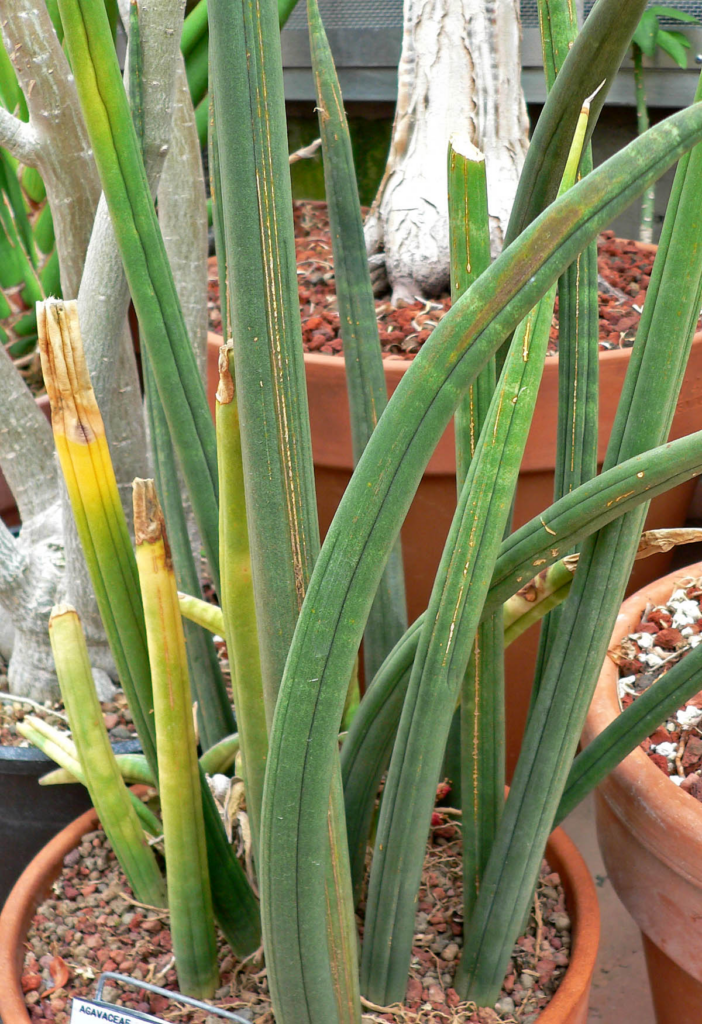
A Sansevieria leaf that is in good health will feel substantial and thick to the touch. However, in sick plants, this is not the case always.
Overwatering is the most frequent reason for mushy, soft leaves. In the same way that it can cause root rotting and the foliage to topple over, overwatering can also come from excessive moisture in plant’s foliage and around it, which can also cause rotting. The inside of the plant leaves will continue to have a mushy texture as they slowly start to rot and die.
Even when you are giving water to your plant appropriately, there can still be an occurrence of the problem if there is no proper drainage or the right amount of drainage holes. Since they should not be able to sit in water for a long time, all plants require well-draining soil, but succulent plants, just like your Sansevierias, require this in particular.
If your plant pot doesn’t have enough drainage holes or if the snake plant’s soil is too compacted or dense to allow the soil to drain properly, you risk having mushy roots and leaves.
Solution:
In these circumstances, remove Snake Plant from its original container and repot it in fresh soil made specifically for succulents that drains well. Instead, you can create your own mixture by adding coarse sand to potting soil to improve the drainage system. Finally, trim decaying roots and remove diseased leaves to promote healthy, new growth.
Humidity can also be a concern if irrigation is not. Because most humans cannot endure humidity levels that are excessively high to produce mushy leaves, this is very unlikely. If your plant is located next to a home humidifier or near a place with frequent moisture, it’s not impossible, though.
It should recover if the harmed leaves are taken off, and the plant is moved to a more dry area.
Related: Snake Plant (Sansevieria): How To Get Your Plant To Flower and More
4. Misshapen And Deformed Leaves
You may possibly have a bug infestation if your plant leaves don’t seem quite okay but aren’t mushy or toppling over.
It can be difficult to see little insects like thrips or mites. Typically, they go undiscovered until damage begins to manifest. These insects thrive on the plant’s soil and on the leaves, eating the internal liquids. This injury will cause the plant leaves to be distorted or deformed, especially if the plant is neglected for a long time.
Disease may also result in misshapen leaves, though this happens less frequently indoors. In humid, hot weather, several fungi can infect your plants, causing malformed parts to go rot and eventually die off.
Solution:
When you water your plants, keep an eye out always for any signs of disease or pest problems. You can also use horticultural oil, which is accessible online or at nearby nurseries, to get rid of pests.
Unfortunately, treating diseases brought on by fungi is more difficult. If the severity of the problem is not too much, you can cut away the damaged plant parts or apply organic fungicide to plant leaves. However, if the illness is quite uncontrollable, the plant may need to be removed so that it doesn’t infect your other houseplants.
5. Brown Tips And Spots On Leaves

Among the more prevalent and regretfully more serious problems with your snake plants are brown tips or spots on the foliage. You must rule out a number of other likely explanations before you can pinpoint the exact cause of this problem.
Physical Damage
Brown spots are primarily caused by physical damage, which is something you can’t truly remedy. For example, if the snake plant damage was brought on by transportation or inclement weather, the damaged leaves may turn brown at the site of the harm.
Unfortunately, there isn’t much that you can do with the damage that has been done, but you may opt to remove the damaged leaf or leaves to promote fresh and healthy development and growth.
Weather Changes
The second factor is weather with extremely high temperatures. When your plant has an exposure to frost, subsequent freezing of its cells causes the plant to die once the cells have thawed.
Distinct brown stains could consequently emerge wherever the harm was caused. Since they are not functional and already dead, these cells won’t be able to regenerate.
On the contrary, browning can also happen when it is really hot, however this time it happens at the plant tips. If the snake plant’s leaves are overexposed to the sun, the leaf tips could scorch and become brown. The likely cause is that you just recently relocated your Snake Plant to a more sunny position.
Fertilization Problems
Problems with nutrients may also be the source of brown stains on the plant leaves and at the leaf tips. Despite your best efforts, giving excessive amount of fertilizers to your plants actually burn the roots, leaving them with brown leaf tips.
Issues with nutrients can also emerge from the usage of tap water. Tap water frequently contains treatment agents which the plants dislike.
Apply fertilizer as stated on the label only when absolutely needed, and occasionally substitute filtered water for your regular tap watering schedule to prevent buildup of chemicals.
Related: 21 Types of Sansevieria – Indestructible, Exotic, and Elegant Air Purifiers
6. Yellow Leaves
The yellowing leaves are among the most prevalent problems with indoor plants. It doesn’t happen frequently in Sansevierias (generally, other problems usually first show up), but it surely does periodically.
Overwatering is the main reason for many of the issues on this particular list. In the case that you didn’t know, overwatering a snake plant is among the worst mistakes possibly you can employ to your plant.
Plants won’t be able to acquire the nutrients they need if their rotting roots are left standing in water. Owners of indoor plants are accustomed to seeing yellowing foliage because of this.
Solution:
Instead of giving water to your plants according to a schedule, check the soil’s moisture level at least once every 7 days with a finger or a meter stick. The growing soil mix should be allowed to almost completely dry up before being rehydrated.
The same issue might be brought on by underwatering or due to inconsistent watering. Water and vital nutrients cannot reach the leaves when you are immersed, which causes the leaves to yellow.
Plant stress and yellowing leaves can also be caused by inconsistent watering, which results in excessive or insufficient watering all at once in contrast to a regular, steady amount.
The yellowing of leaves, which is frequently coupled with other damage indications like brown patches or deformation, can also be brought on by pests. If the damaged leaves are clipped, and the pests are removed, the plant can have a chance to recover.
To read more about the yellow of your Sansevieria plants, feel free to click through this link here for more in-depth information.
7. Wrinkled Leaves
The leaves of snake plants typically feature healthy-looking, glossy, and vividly colored leaves. However, something isn’t right if the snake plant’s leaves are drab and wrinkled.
Warmth is frequently one of the causes of wrinkled leaves, though there are other potential causes as well. If there are several days where the temperature is particularly warm, your beautiful snake plant could experience heat stress. The stress and intense heat will be the cause of the leaves wilting. Excessive light from the sun can also result in the same issue.
Furthermore, leaves that have wrinkles could have been flooded with water. Even while Sansevierias enjoy a little neglect, prolonged submersion may cause the leaves to wrinkle since there won’t be enough moisture in the plant cells to maintain them hydrated. This is especially true in hotter regions where plants need a bit more attention and containers dry out more quickly.
If the challenging circumstances are resolved, your plant ought to grow and function normally once again.
If you just moved, acquired, or replanted your snake plant, the existence of wrinkled leaves may also be an obvious stress sign. Plants might become shocked if they are moved about a lot since they are not accustomed to environmental changes. However, after the plant adjusts, which will take some time, things should gradually return to normality on their own.
8. Curled Or Twisted Leaves
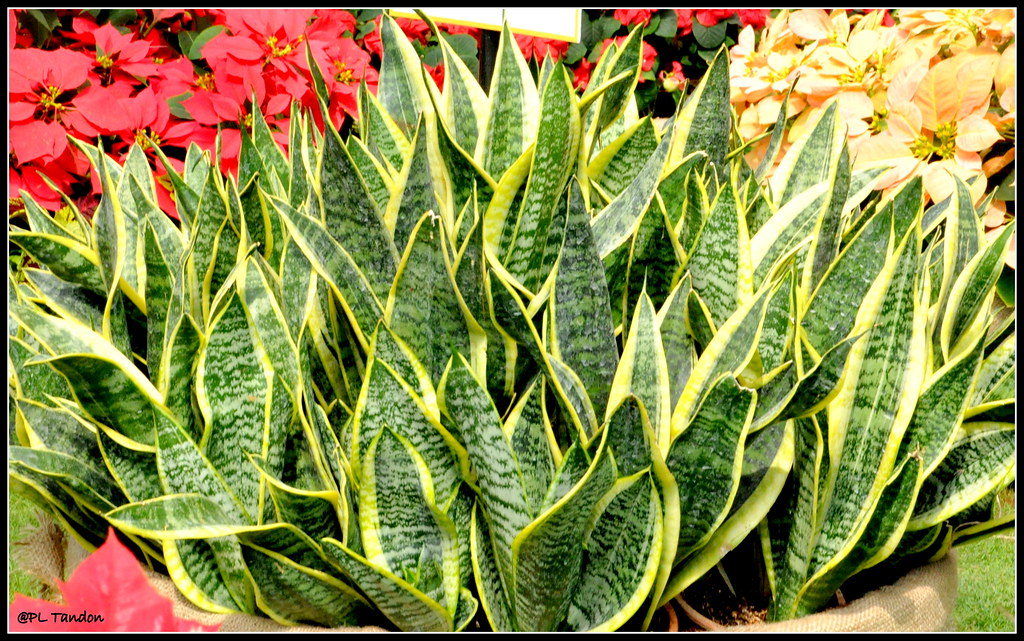
Most of the snake plants, especially the larger ones, have broad, flat leaves. Leaves which are bending or curling outward or inward are a symptom of a deeper issue.
Underwatering
Like the prior issue, underwatering is typically the primary cause. Lack of water causes leaves to lose the typical upright position and curl inward over time in order to keep the moisture. Therefore, if leaves begin to wrinkle or bend after underwatering, you can fairly be certain that this is the cause.
Pests
Pests, especially thrips and spider mites, might also be to blame for curled leaves. Leaf curling is among the earliest signs of infestation; if the problem is not corrected, subsequent problems like deformation or browning may appear. Apply a substantial amount of horticultural oil on the foliage to choke and kill the insects.
Overfertilization
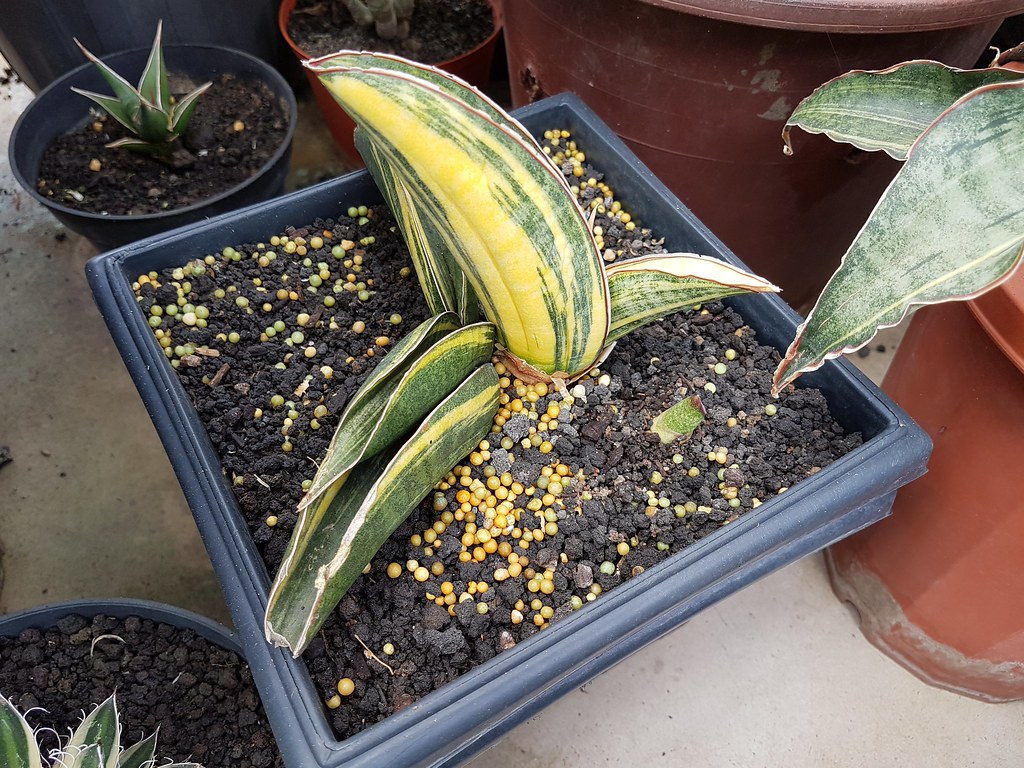
Overfertilization is yet another explanation for curled leaves. The Snake plants don’t need a lot of food, therefore during the growing seasons, they typically cope just fine with a single diluted application of fertilizer.
However, the roots may be damaged if excessive fertilizer is used, which may result in the leaves curling and their edges hardening and turning dark.
Only use fertilizer as advised and only when it is absolutely necessary. More fertilizer, in all honesty, does not lead to greater growth always.
9. Mushy And Brown Roots
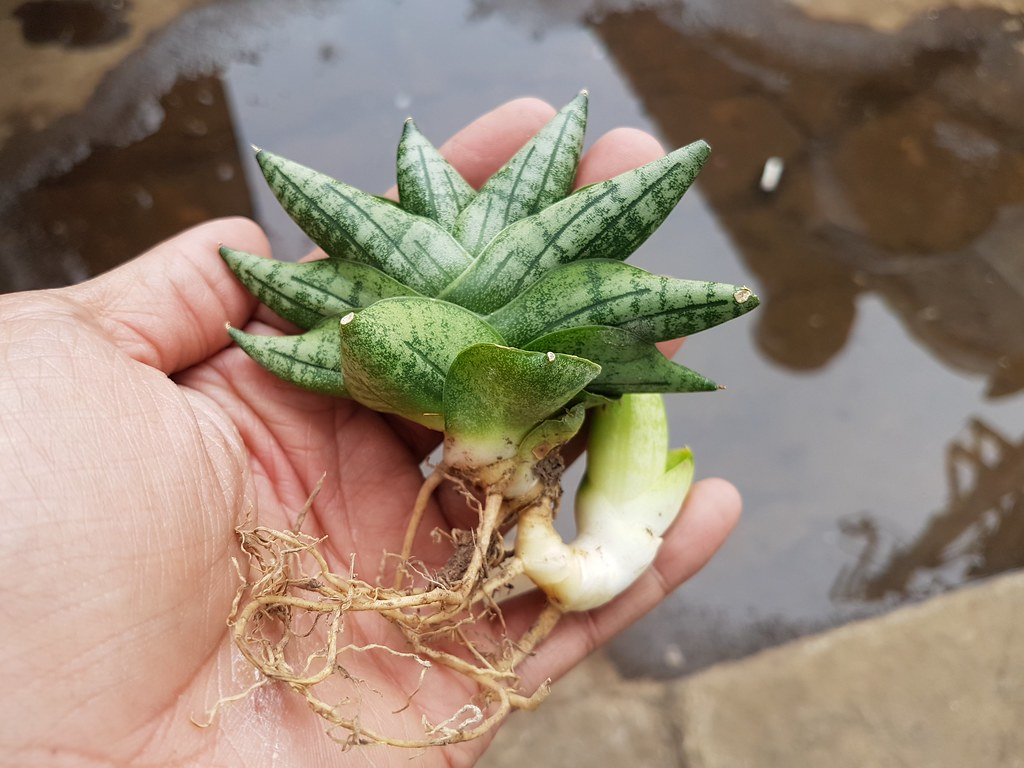
If you are repotting your lovely snake plants and observe the snake plants roots to be mushy and brown, don’t overlook the issue. Unattended root problems will undoubtedly cause your plant to die because the plant roots are important to sustaining the life of your plant.
There are two issues that lead to mushy and brown roots, with overwatering being the most prevalent. Nearly every issue on this article can be attributed to watering problems, and this particular issue is no different.
When kept in water, the roots of snake plants develop root rot. This fungus damages the tissue, which inhibits the plant from receiving essential nutrients and water. Therefore, always have a bias on underwatering your plant than overwatering because most of the issues it causes, most especially root rotting, can be challenging to remedy.
Disease, which commonly coexists with the overwatering problem, is the second factor. Fungi can live in the soil and damage the roots, most especially in humid and wet conditions.
If you pot up snake plant using earth straight from the garden, issues like this and others could occur. Since garden soil can encourage disease and quickly compacts, preventing proper water drainage, it is not a good choice for potting.
If you have problems with the plant roots, trim off the unhealthy growth you observe until what’s visible are the viable and healthy ones, wash off any soil that is still on the plant, and then repot it in superior potting snake plant’s soil that has been enhanced with sand to have a proper and efficient drainage.
Stunted Growth And Development
The final problem could be hard to pinpoint because snake plants grow slowly, but it nonetheless exists. So, don’t panic if the foliage hasn’t appeared in days. Insufficient growth is generally noticed months or years later. However, you could be in trouble if your plant abruptly stops growing or is not growing as it previously did years before.
Pot Size
Pot size is the most common issue. Repottery is typically required for snake plants every three up to five years. If a plant was growing in the exact same pot for a long time, you may be able to determine that it is basically pot-bound. It will rapidly begin to grow once more if you repotted it into a new pot that is 1-2 sizes larger.
To know more about the perfect pot for your Snake Plant, you may read this article on Sansevieria potting.
Insufficient Sunlight
Lack of sunlight is the second most likely cause. Plants use and need sunlight in order to photosynthesize, which permits plant development. Without sufficient amount of sunlight, your lovely snake plant won’t be able to grow larger. Try moving your entire plant to a location with more light, but not direct sunlight, to see if it solves the problem.
Nutrient Deficiency
Thirdly, there might not be enough nutrients in the snake plant’s soil, which would prevent growth. This typically happens after repotting, but it can also happen when a plant is initially planted in nutrient-poor snake plant’s soil.
Once a plant has taken all the vital nutrients in the soil, the soil in a container becomes exhausted and unable to nourish the plant. Use a well-balanced liquid fertilizer instead of overfertilizing the soil.
In addition to these main challenges, almost any barrier can impede growth. For example, inadequate watering, excessive fertilization, exposure to the sun, bug and disease issues, etc., can all cause plant stress. In tough circumstances, the plant puts its survival before growing larger.
Determine the most likely cause by looking at the growth conditions, then address each one independently until the symptoms are gone.
Frequently Asked Questions
What type of soil mix works best for a snake plant?
As long as the mixtures are well-draining, a variety of mixtures of snake plant’s soil can be used. However, it is most preferable to use a cactus/succulent mix with 1 part 1/4′ pumice in potting mixtures for snake plants. Pumice is a volcanic rock that, when added to potting soil, gives your snake plants excellent drainage.
What is the best pot for Sansevierias?
You may grow snake plants in a variety of containers, but it is best to use terra cotta pots or plastic nursery pots that you can tuck inside a prettier pot.
Just be aware that depending on your environment, terra cotta pots will dry up much more quickly, which can be both a pro and a negative.
Do Snake Plants need fertilizer?
Fertilizer is an essential component of any houseplant care regimen for optimum growth and health. Although you can avoid fertilizing, your plant will ultimately notice.
Since they naturally grow in rocky, poor soil in tropical Africa, snake plants don’t require a lot of fertilizer, but you will have a healthier plant if you do.
Do snake plants require holes for drainage?
Yes. Any plant, but especially succulent ones like Sansevieria, should follow this rule. If there is no drainage hole, there is too much of a chance of snake plants root rotting.
When should a snake plant be watered?
Instead of watering frequently, you should do it just when your plant requests it. Snake plants prefer their potting soil to be fully dry, however, if you wait too long, your snake plants may also suffer.
Go ahead and water once you’ve decided that your snake plant’s soil is entirely dry. Thoroughly wet the area and let all extra water drain out of the drainage hole.
Final Thoughts
Snake plants are beautiful indoor plants that belong in the homes of all plant parents. They are exceptionally hardy, low-maintenance plants that are ideal for homes with limited free time.
Although they can withstand a variety of situations, they can still succumb to the common issues that indoor plants face, like water stress, disease, pests, and more. Now, you have a thorough guide to debugging your way back to a healthy and thriving snake plant with this article.
Editor’s Recommendations
Monstera Laniata Vs. Adansonii: Differences Between The Two Monsteras
Philodendron McColley’s Finale: Care, Watering, and Propagation Guide
Prayer Plant’s Bloom 101 | How To Make Your Prayer Plant Bloom Fast!







